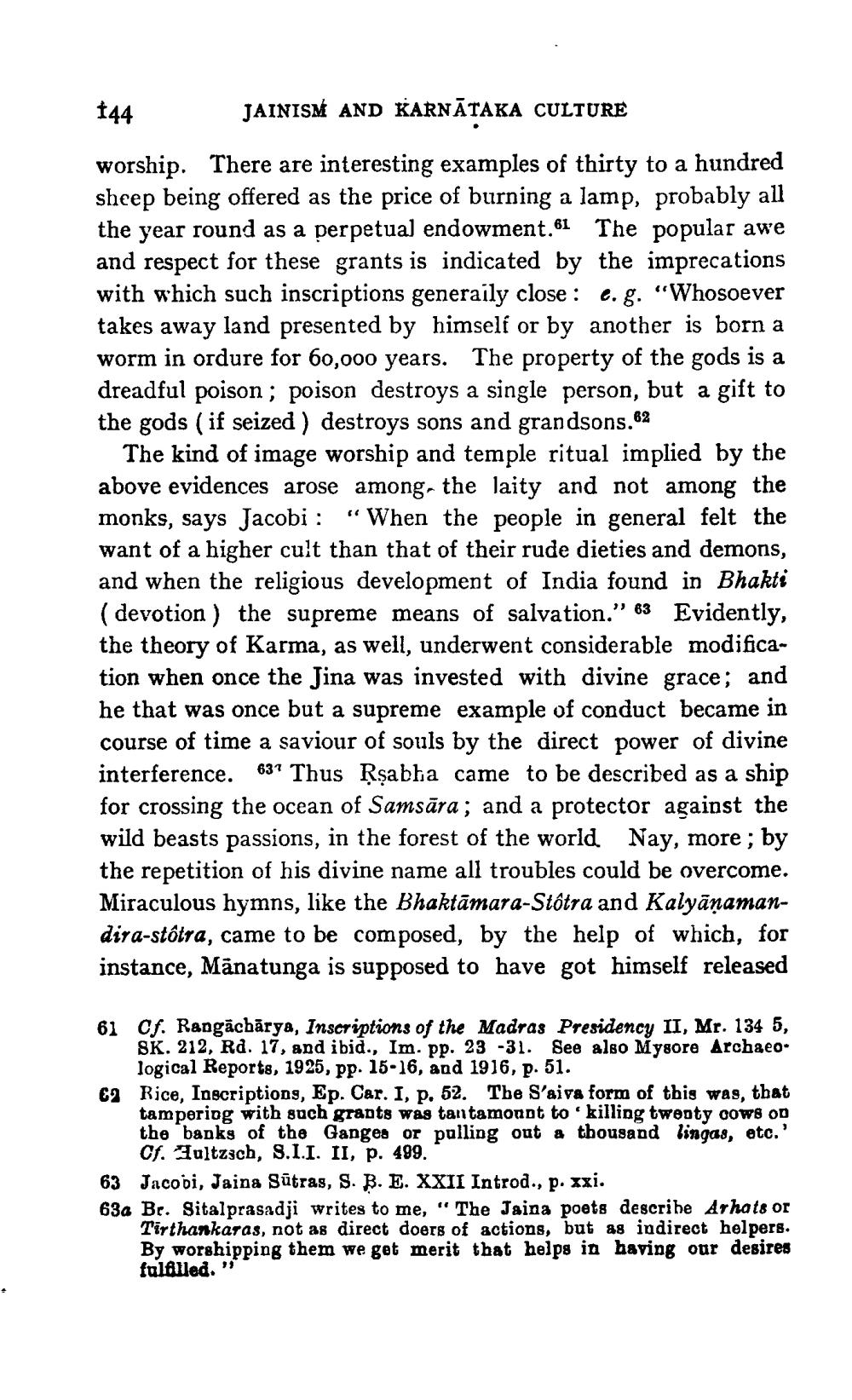________________
144 JAINISM AND KARNĀTAKA CULTURE worship. There are interesting examples of thirty to a hundred sheep being offered as the price of burning a lamp, probably all the year round as a perpetual endowment.61 The popular awe and respect for these grants is indicated by the imprecations with which such inscriptions generaily close : e.g. "Whosoever takes away land presented by himself or by another is born a worm in ordure for 60,000 years. The property of the gods is a dreadful poison; poison destroys a single person, but a gift to the gods (if seized ) destroys sons and grandsons.62
The kind of image worship and temple ritual implied by the above evidences arose among, the laity and not among the monks, says Jacobi : “When the people in general felt the want of a higher cult than that of their rude dieties and demons, and when the religious development of India found in Bhakti ( devotion) the supreme means of salvation.” 63 Evidently, the theory of Karma, as well, underwent considerable modification when once the Jina was invested with divine grace; and he that was once but a supreme example of conduct became in course of time a saviour of souls by the direct power of divine interference. 632 Thus Rşabha came to be described as a ship for crossing the ocean of Samsāra; and a protector against the wild beasts passions, in the forest of the world Nay, more; by the repetition of his divine name all troubles could be overcome. Miraculous hymns, like the Bhaktāmara-Stótra and Kalyānamandira-stôtra, came to be composed, by the help of which, for instance, Manatunga is supposed to have got himself released
61 Cf. Rangáchārya, Inscriptions of the Madras Presidency II, Mr. 134 5,
SK. 212, Rd. 17, and ibid., Im. pp. 23 -31. See also Mysore Archaeo
logical Reports, 1925, pp. 15-16, and 1916, p. 51. 69 Rice, Inscriptions, Ep. Car. I, p. 52. The S'aiva form of this was, that
tamperiog with such grants was tantamount to killing twenty cow8 OD the banks of the Ganges or polling out a thousand lingas, etc.'
Cf. ultzsch, S.I.I. II, p. 499. 63 Jacobi, Jaina Sūtras, S. B. E. XXII Introd., p. xxi. 63a Br. Sitalprasadji writes to me, " The Jaina poets describe Arhats or
Tirthankaras, not as direct doers of actions, but as indirect helpers. By worshipping them we get merit that helps in having our desires fulalled."




